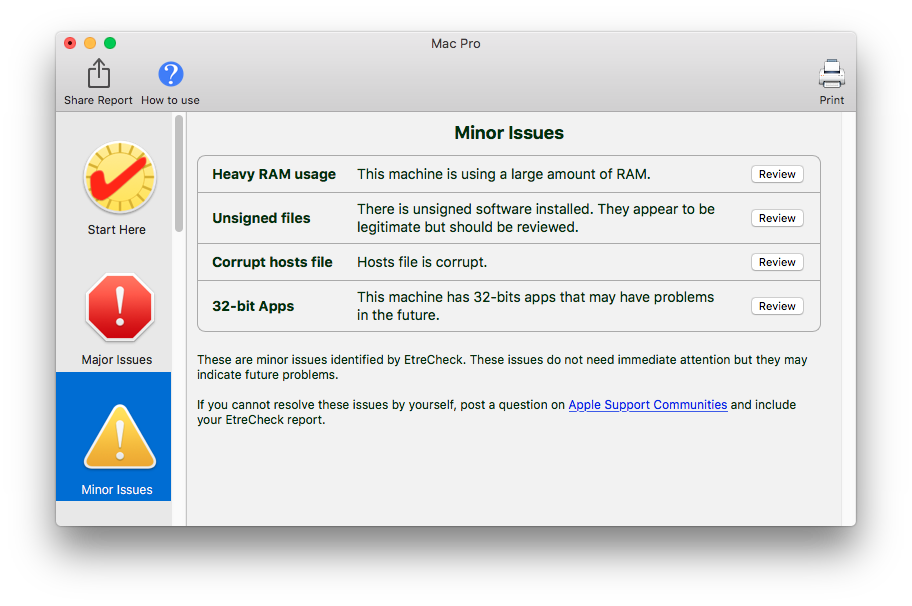/western-digital-data-lifeguard-diagnostics-582dcd983df78c6f6acba2ce.png)
Best Drive Health Diagnostic Utility For Mac
Jan 6, 2016 - List of best Mac apps to check Mac Pro, MacBook Air and Mac Mini Solid State. It is an advanced drive health diagnostic and monitoring utility.
By • 4:00 am, January 7, 2011 • • • Working as a Mac consultant brings me in contact with several dozen different Macintosh systems every month. Many needs and tasks are common – OS upgrades, backups, system slowdowns, troubleshooting startup or WiFi problems. Like any good mechanic there are a few items in my toolbox which I favor above others. From built-in tools like Disk Utility, Network Utility and Console to third-party tools like DiskWarrior, FileSalvage and iStumbler, these items help get the job done. Mac OS X Built In Utilities Apple provides a slew of utilities as part of Mac OS X, many of which are useful for troubleshooting and maintenance. All of these items can be found inside Applications/Utilities on your Macintosh hard drive. Disk Utility Most Mac users are familiar with Disk Utility.
It’s used to format hard drives, create RAID arrays, mount volumes, burn disk images (.dmg files), and fix basic disk problems. The Repair Disk function can be used on any non-startup drive and can fix simple volume or filesystem errors. Repair Permissions is the other kind of maintenance Disk Utility can do. Free parallels desktop for mac student.
While less important in solving problems than with previous Mac OS X versions, this operation can help when you can’t open certain files or programs on your Mac. Disk Utility also monitors the basic S.M.A.R.T. Status of any internal hard drives, providing a (potentially) useful indicator of pending drive problems. Network Utility An all-purpose application to check basic connectivity status, Network Utility lets you check Ethernet, Airport or Bluetooth Port Info, Ping, Lookup, and Traceroute internet addresses, and scan for open ports and vulnerabilities. Using these tools can help determine where a problem lies when you can’t get online. Does your ethernet or Airport card (port) have an IP address? If not, you aren’t on the network at all.

Can you successfully Ping or Traceroute the name or IP address of the website you’re trying to reach? If not, it’s a problem somewhere between you and the remote site. Where things fail provide clues for network troubleshooting. Airport Utility Airport Utility is used to control Apple Airport equipment: Airport Express, Airport Extreme, Time Capsule. It is the only utility available to control this gear, and does not work with non-Apple equipment. Therefore this program is something you either must use or never use, depending on your WiFi setup. Airport Utility will allow you to add new or items on your LAN or reconfigure existing equipment, check for and apply firmware updates, and find out why the light keeps blinking yellow on the front of your Airport Extreme.
Keychain Access If you’ve forgotten the password for something you previously entered on your computer, there’s a good chance this item has been saved to your keychain. WiFi passwords, email accounts, server logins, most of these items can be found in the system keychain. Keychain Access is the utility used to view, change or delete these stored items. The fastest way to access this utility is to double-click on your user keychain file: ~ /Libary/Keychains/login.keychain If the item you’re looking for doesn’t appear in the list, use the search box. Double-click on the item you need, then click Show Password. You will need to enter your current keychain password before viewing the item, this is the same as your Mac user password. Console Your Mac keeps track of normal and abnormal operations in a series of system and application logs – startup, network activity, installations, errors and crash details. When problems occur it can be helpful to look through these logs for clues as to what’s happening.